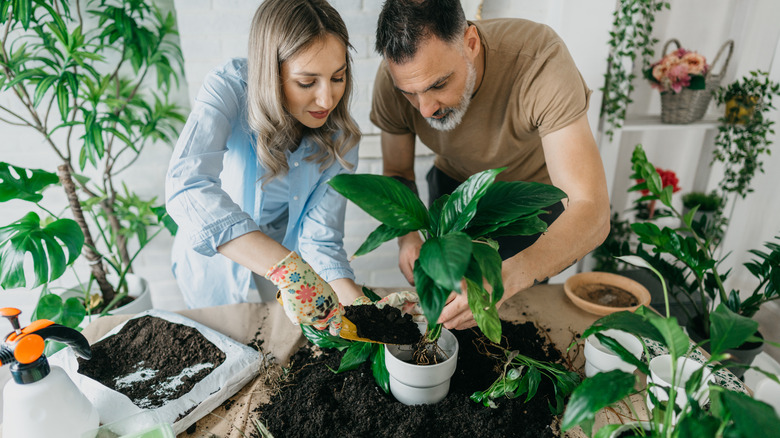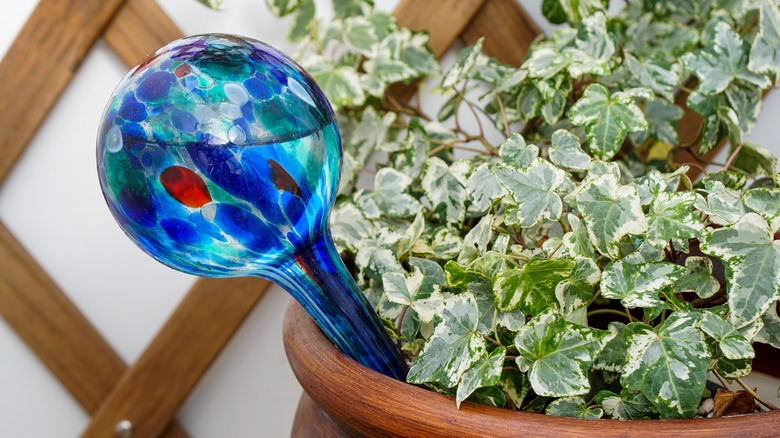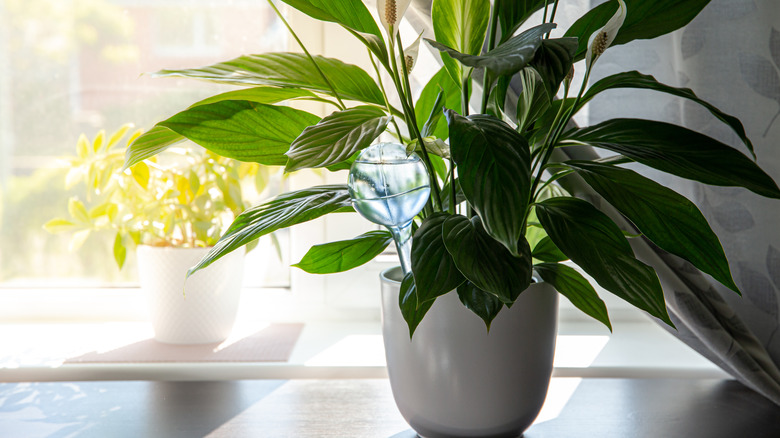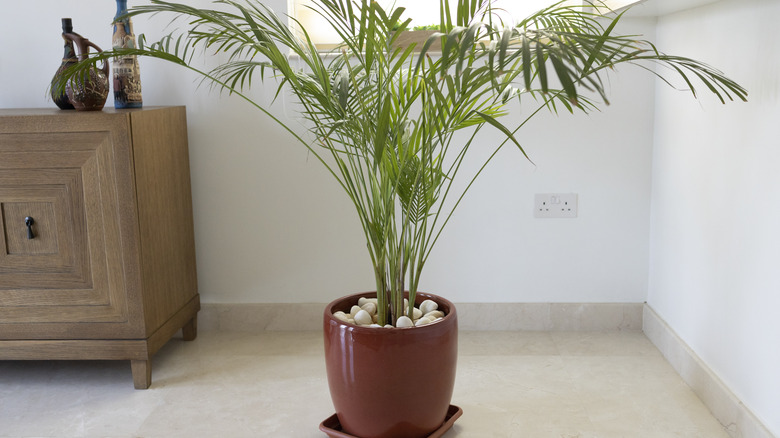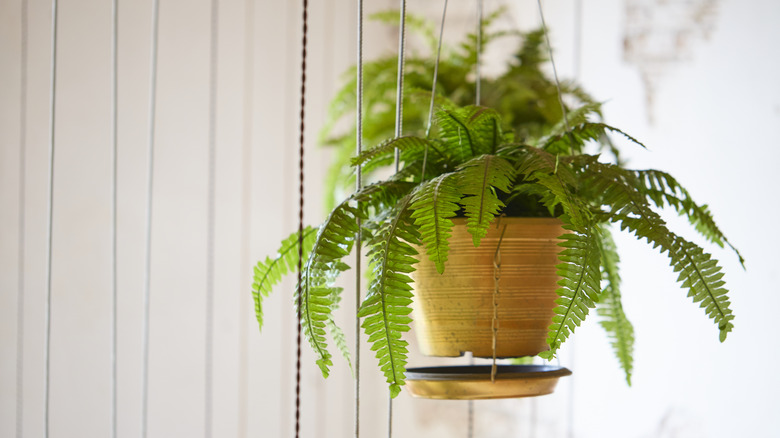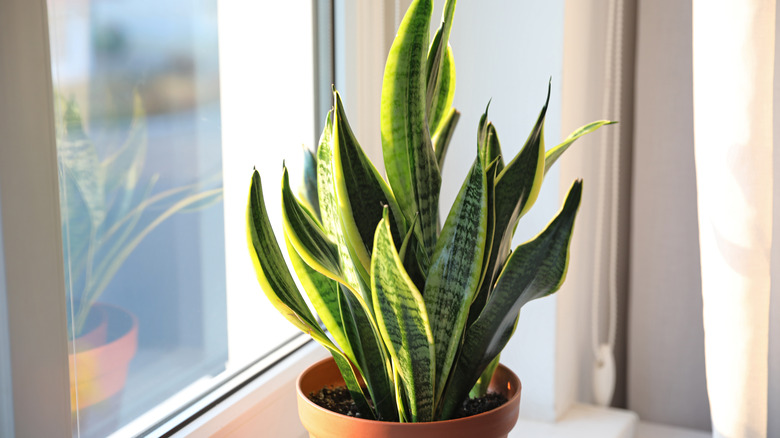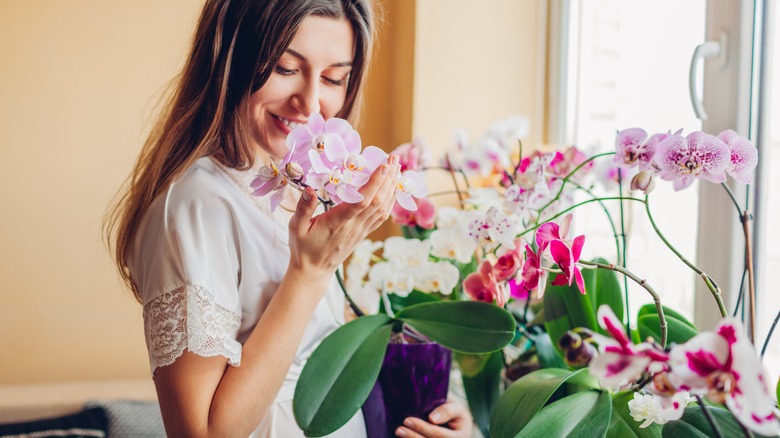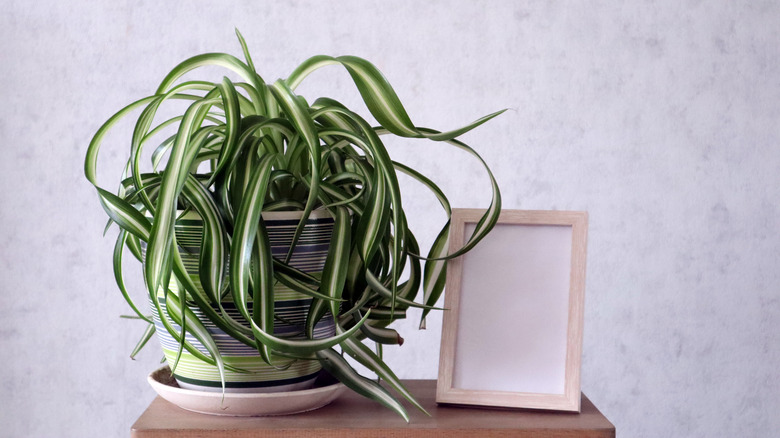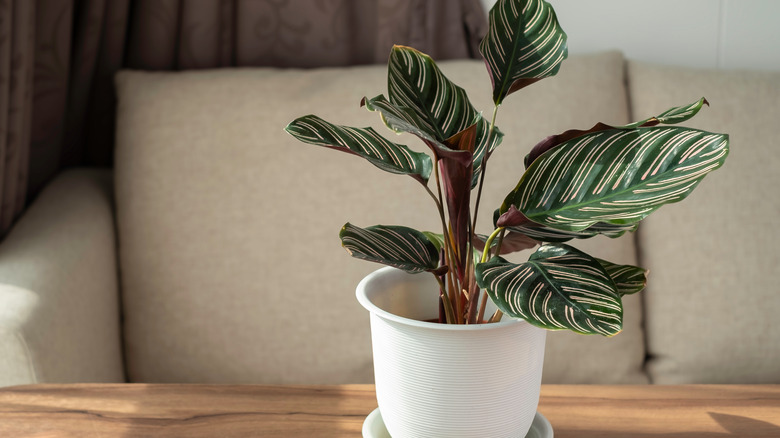8 Stunning Houseplants That Can Help Clean Mold From Your Home's Air
Few other things measure up to breathing in crisp, rejuvenating air inside your home, right? Unfortunately, there is a hidden menace that sneakily undermines the health and serenity of our indoor spaces — mold. These fungal nuisances release tiny spores into the surroundings that can, upon contact or inhalation, spur nasty respiratory issues or allergic reactions (per the Illinois Department of Public Health).
Now, wouldn't it be remarkable if some houseplants — yes, the soothing, leafy greens we adore for their visual appeal — could actively clean mold spores from our homes' air? Luckily, there are some amazing air purifiers out there, including superstars like ivy, peace lilies, Boston ferns, spider plants, and snake plants.
Mold is sneaky, silently exploiting damp, warm, poorly ventilated areas of our homes to cultivate its colony. Of course, learning about the adversary's nature is 50% of the battle. To crush the enemy, our houseplants become warriors of Mother Nature as many of them can absorb toxins, transforming them into food and releasing purified air back into your indoor environment. Others excel in moisture absorption, thereby reducing humidity levels, which creates unfavorable environmental conditions for mold.
Let's explore eight plants that will reduce mold indoors and simultaneously enhance the aesthetic allure of your home.
1. Ivy
Picture ivy's delicate spectacle of cascading, forest-green leaves billowing from slender stems. These emerald climbers tenderly embrace virtually any structure, a pleasing dance when kept in control. Yet ivy champions in more than beauty, for it excels in filtering out mold spores, creating a healthier indoor environment. A NASA Clean Air study found that these climbing beauties also absorb harmful volatile organic compounds, breaking them down through phytoremediation. Regular trimming will keep those enthusiastic vines in check; however, use gloves to prevent skin irritation. Don't get too lost in their beauty, though; Ivy's leaves contain glycoside hederin, which, if ingested, can lead to diarrhea, dilated pupils, and breathing difficulties (per Invasive.Org).
2. Peace lily
A peace lily brings a touch of understated luxury with its shiny, dark green leaves, which provide a perfect backdrop to its show-stopping white flowers that first bloom in early summer. In the resemblance of a white flag of peace, these blossoms earned the plant their name. Unseen beneath the stunning exterior hides supreme warriors adept at trapping and imprisoning mold spores and other pollutants like formaldehyde and acetone. Though these lilies relish moist soil, be careful not to overindulge — soggy soil is mold's playground. Bestow your peace lily with a spot bursting with bright, indirect sunlight. But be mindful that this plant's foliage harbors calcium oxalate crystals, a dangerous nimble for the unwary.
3. Palm
Fancy some lofty elegance coupled with a mold-busting bonanza? Meet the palm plant. Palms stand tall, their slender trunks crowned with feathery, arching leaves that seemingly whisper echoes of their tropical origins. Befitting the moniker "humidity darlings," these leafy towers ingeniously combat mold by greedily seeping up moisture in high-humidity areas like bathrooms, while some, like the broad lady palm, also reduce menacing pollutants like ammonia. These green mold-cleaning companions do their best with indirect sunlight and a Goldilocks-like watering regime — not too much, not too little. And are they pet-friendly? Varieties like the parlor palm and the banana palm are safe for pets.
4. Boston fern
The Boston fern is a slow grower, but as it unfolds, it rewards you with densely feathered fronds that create a vibrant green waterfall effect. Excelling in soaking moisture from the air, these plants rid your home environment of mold, becoming another silent yet indispensable warrior against mold spore allergies. Having it in your interior space, particularly in hanging baskets, adds a tropical freshness. They adore sunlight and water, so place them near a sunlit window and satisfy their thirst with frequent watering. Before you know it, your space will transform into a lush pocket of pristine air.
5. Snake plant
Also going by the comical moniker mother-in-law's tongue, the snake plant is an evergreen perennial with upright green leaves painted in horizontal strokes of yellows. During the day, this splendid wonder retains its stomata closed, meaning no transpiration and zero contribution to humidity. Once the sun sets, a delightful twist of events happens: the snake plant becomes a CO2-to-oxygen factory, fostering a fresher breathing environment. It's also recognized by NASA for its ability to filter out trichloroethylene, benzene, and formaldehyde. For the black thumbs, the snake plant is easy to maintain; just place it in an area with indirect sunlight and avoid overwatering.
6. Orchid
Picture an orchid plant as a dancer flaunting a vibrant gown, enchanting with an explosion of colors, from white, purple, orange, and pink to blue. This epiphyte sucks nourishment and moisture from around, creating a leveling effect in your home's humidity. Maintaining such a balance makes your home unpleasant for molds. Remarkably, orchids exhibit prowess in scrubbing the air of xylene, a chemical typically found in paint solvents. To be the proud nurturer of an orchid, place it in indirect sunlight and substitute soil with a specially formulated potting mix for orchids, mimicking their natural growth medium.
7. Spider plants
Our list of plants that can clean mold from your home's air is inexhaustible without the spider plant. Its cascading leaves with white or yellow stripes bend in a graceful arch, and the small white flowers are an adorable addition. Speaking of air purification, spider plants work by absorbing humidity and airborne mold spores. A bonus perk is their characteristic of nighttime oxygen production. With spider plants being non-toxic, you can enjoy a worry-free experience when children and pets are around. Worried about your black thumb? Worry less, as spider plants are content with moderate sunlight and watering intervals.
8. Calathea
Finally, we met the fashionable calathea. It boasts oblong, wavy leaves adorned with an enthralling interplay of light and dark green patterns, evoking the appearance of a rattlesnake's skin. The intrigue doesn't end with just the surface; flip the leaves, and a stunning display of reddish-purple hue comes to life on the underside. Thriving in humid environments, it absorbs excessive moisture in the air, which is bad news for mold growth. An east or south-facing bathroom with plenty of bright yet indirect sunlight creates the sweet spot for this plant. As an added bonus, the ASPCA confirms that calathea is non-toxic to cats and dogs.
